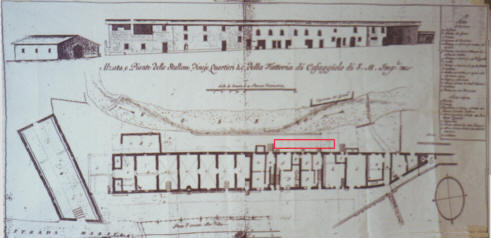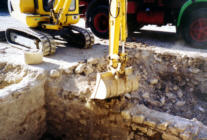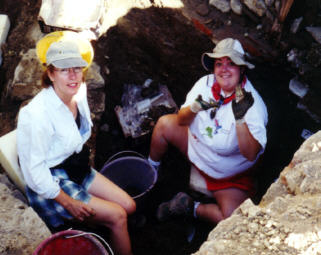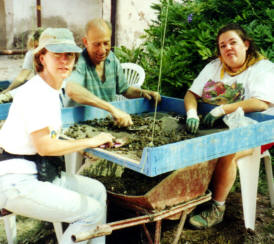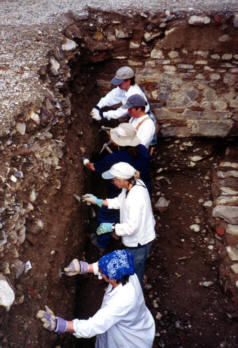|
The Excavations |
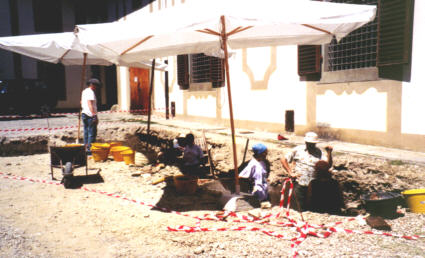 |
| The | drawing below left is a 18th century plan showing the structure before extensive modifications. The plan (with North down) shows the stream that ran past the excavation area (red rectangle), now routed through a tunnel. Flooding by the stream, which was so close to the building, led to the construction of a culvert or tunnel and the raising of the ground level by adding fill. The other drawing (with North up) shows the structure in relation to the villa today. Both the excavation area and the stream tunnel are also shown. |
|
|
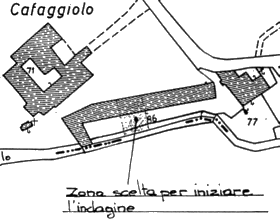 |
|
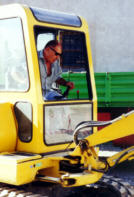 |
A trowel is the usual tool of the archaeologist, but sometimes heavy equipment is brought in. In fact, a backhoe with the right operator can be a precision tool. In this case the upper layer, over a meter thick, has no archaeological significance, that is, it is all one context layer. |
|
| The backhoe did some of the heavy work, but we moved lots of earth with trowel and bucket. Below left, Gwen shows a fragment with the SP mark she found while working with Karen. Principal Investigators Sandro and Anna get down and dirty, below right. |
|
|
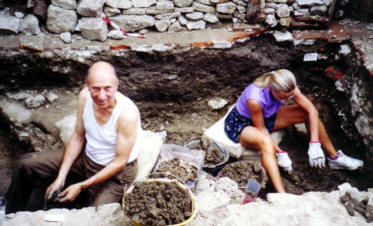 |
|
Some parts of the trenches were so rich in finds that the refuse buckets were carefully screened. Karen, Sandro, and Gwen work one of the screens, below left. Finds need to be washed. One rainy day a special washing table was set up in the Manica Lunga, below right. |
|
|
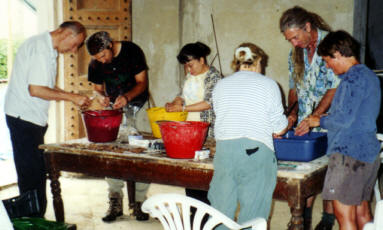 |
|
|
|
|
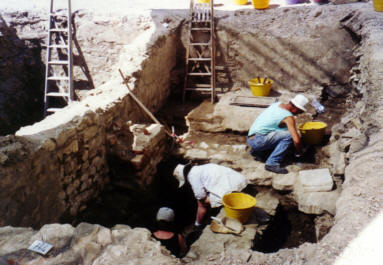
We spent a lot of time in the trenches. The group at left, carried along with a song, "clean" up the side for an elevation drawing of the layers. The photo above of an adjacent trench catches Karen, Barbara, and Piero, a member of a local archaeology club at work. |
|
|
The 18th century plan above shows a number of rooms, stairways, and other structures no longer visible in the Manica Lunga. Excavations in 1999 revealed that renovations at the end of that century raised the floor about four feet. See a little of our sub floor work here. |
|
|
Many of the methods of archaeology have been used for a hundred years, but new techniques and technology are being introduced. Read a little about this here. |
||
|
The stratigraphy of the trenches next to the Manica Lunga was extremely complex with multiple floors and crisscrossing walls. Read something about this here. |
This page and its contents
© Copyright 2001 Michael & Karen Crisafulli. All rights reserved.
